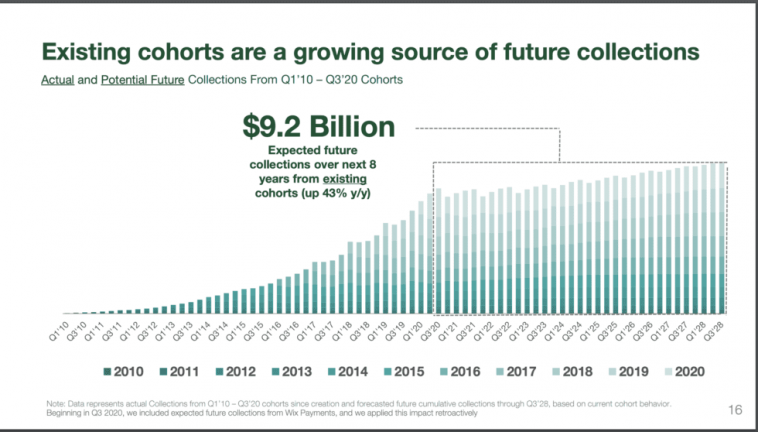- Like
- SHARE
- Digg
- Del
- Tumblr
- VKontakte
- Flattr
- Buffer
- Love This
- Save
- Odnoklassniki
- Meneame
- Blogger
- Amazon
- Yahoo Mail
- Gmail
- AOL
- Newsvine
- HackerNews
- Evernote
- MySpace
- Mail.ru
- Viadeo
- Line
- Comments
- Yummly
- SMS
- Viber
- Telegram
- JOIN
- Skype
- Facebook Messenger
- Kakao
- LiveJournal
- Yammer
- Edgar
- Fintel
- Mix
- Instapaper
- Copy Link
Everyone in SaaS talks about CLTV (or LTV, same thing). The lifetime value of your customer. You can see a great detailed analysis of how to calculate it here. And then, everyone goes on to calculate some metric telling you how much to spend on Sales and Marketing. Usually some fraction (1/3 or so) of your CLTV. Which usually equates to spending 100% or more of your first year ACV on acquiring your new customers. That’s generally fine, so long as you have capital to fund it.
And indeed, now that we have so many SaaS companies public, we can see just what a force customers that stay for years are. Take a look at this chart from Wix. Even with relatively high churn for a public company (since Wix is self-service), its first $1B of ARR will grow to $9.2B over the following 8 years (!):
UiPath illustrates the point even more impressively. Its original $400k of customers now pay $27 million!! More here:
As incredible as the power of long-lived customers and if you can get it, NRR of 110% or higher … even then we still understate CLTV. Why? We don’t include second-order revenue.
Standard CLTV calculations don’t account for virality and second-order customers. So you may underinvest overall, or invest, in fact, too much in Sales and Marketing — and not enough in Customer Success.

Let’s figure out the Total Revenue Generated by {One Single Average} SaaS Customer Over its Lifetime:
- Ok, Sales closes its average Enterprise Customer A for $10,000 a year from a lead generated by Marketing. Well done, guys.
- Then, in Year 2, average Enterprise Customer A adds $2,500 in additional licenses, or $12,500 total on average for Year 2. Some more, some less. It typically averages out to 15-30% for more SaaS apps in Year 2 (averaged across all your customers) selling to medium sized and larger customers, net of churn.
- Then in Year 3, average Enterprise Customer A adds another 25%, or $15,600 in Year 3.
- So direct revenue over First Three Years = $38,125 from that One Sale.
- And actually, most larger customers last longer than 3 years, but let’s stop there for now.
That’s the easy part to calculate, once you have a few months of data (maybe 18-24) under your belt.
But what about the second order effects?
- At the end of Year 1, your champion quits Enterprise Customer A, but goes to Enterprise Customer B to do the Exact Same Job. And buys your product again.
- This happens about 10% of the time.
- So that first sale is actually worth $42,000 (rather than first $38,000 above, x 110%).
- But then it happens again in Year 2. So it’s really $46,000.
- And at the end of Year 1, your champion tells three of her friends about your company. And one of them purchases. About 30% of the time.
- So that first sale is actually worth $60,000, adding in the second order effects (viral, word-of-mouth, champion job changes, etc.) — if you make your customers super duper happy.
Ok, you can take this on and iterate it forever, I understand.
But my point here is standard first-order only CLTV analyses underestimate true revenue generated by customers by 50-100% in most SaaS models.
Put differently, your “all-in” CLTV, including second-order revenues and customers, is probably as much as 2x that of how you are calculating CLTV today.
So, sure, figure out the perfect ratio of Sales and Marketing expenditures to CLTV. That will make your board slides pretty, and help you too.
But what you really want to do is figure out the perfect ratio of maximum possible investment in Sales, Marketing, and Client/Customer Success — as one cohesive investment, not two. All-in. Because the second-order effects compound. They’re more profitable (no additional marketing or customer acquisition costs). They build your brand. And they fuel your growth.

Second Order effects image from here.
(note: an update of one of the original SaaStr Classic posts)





